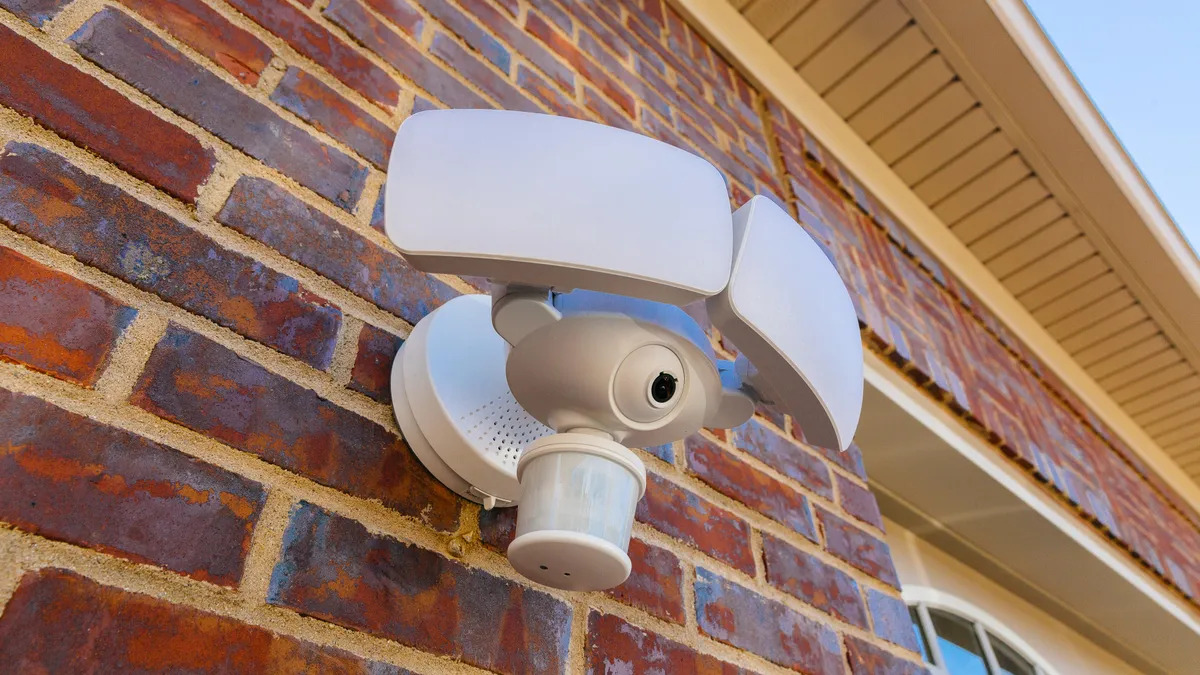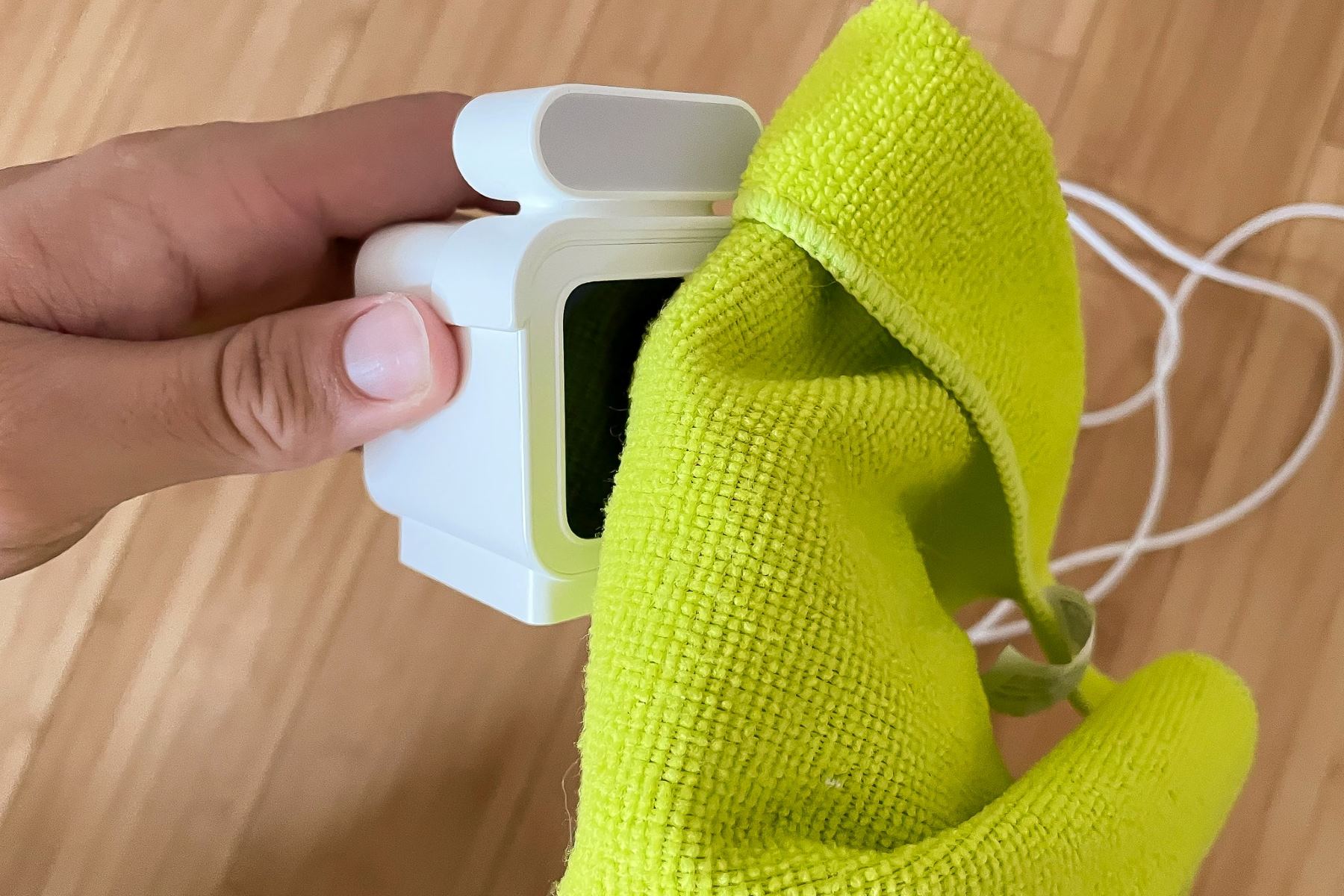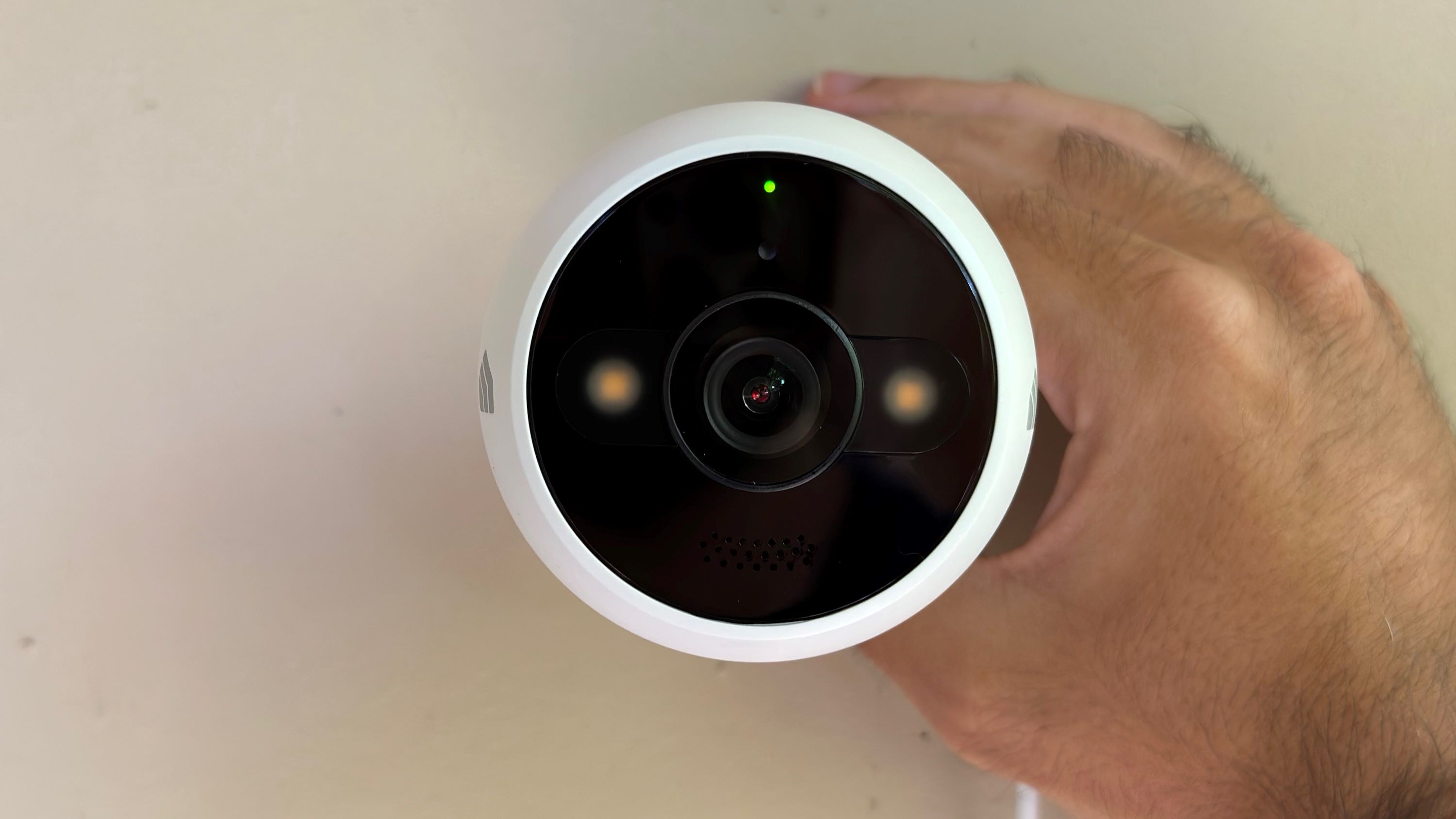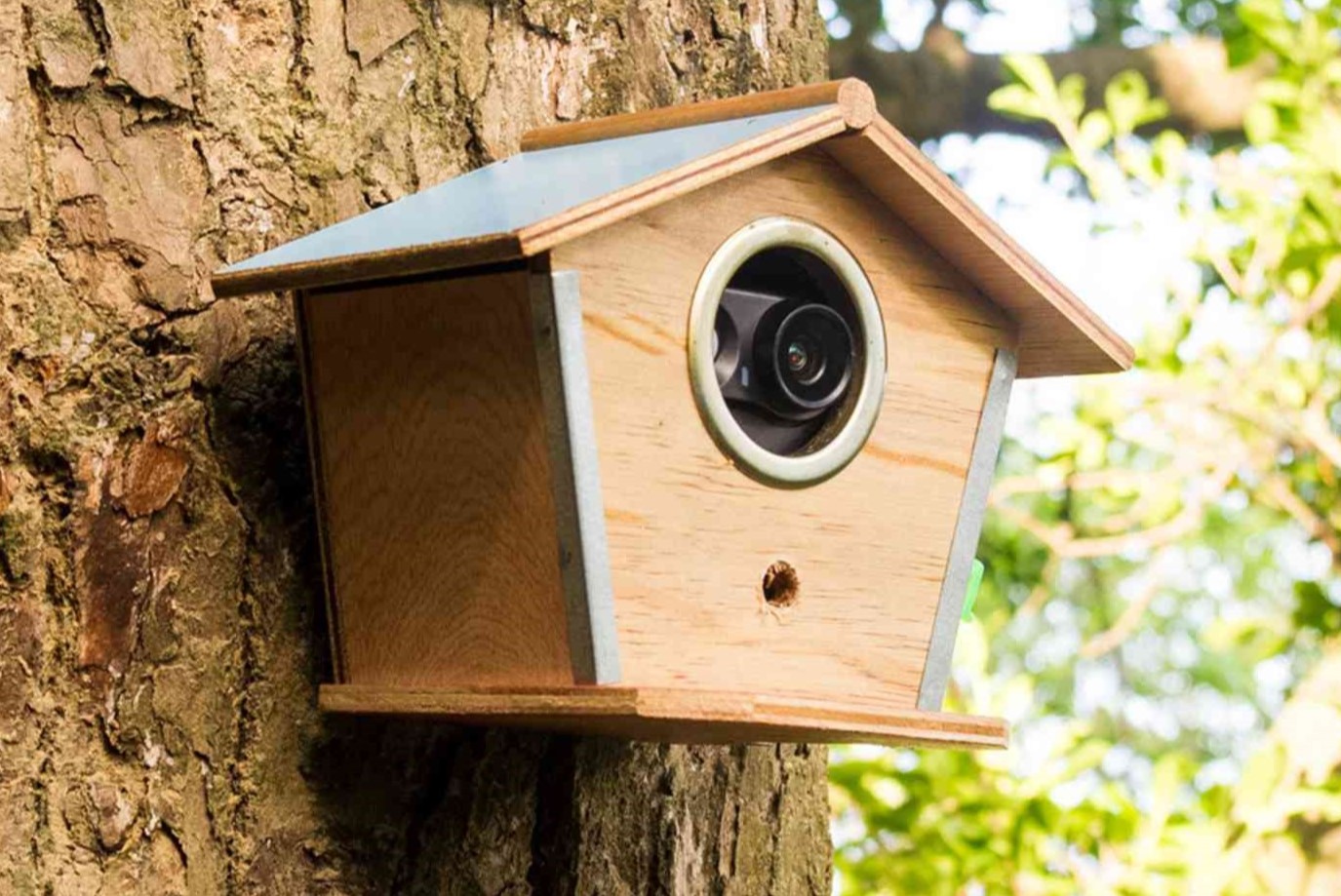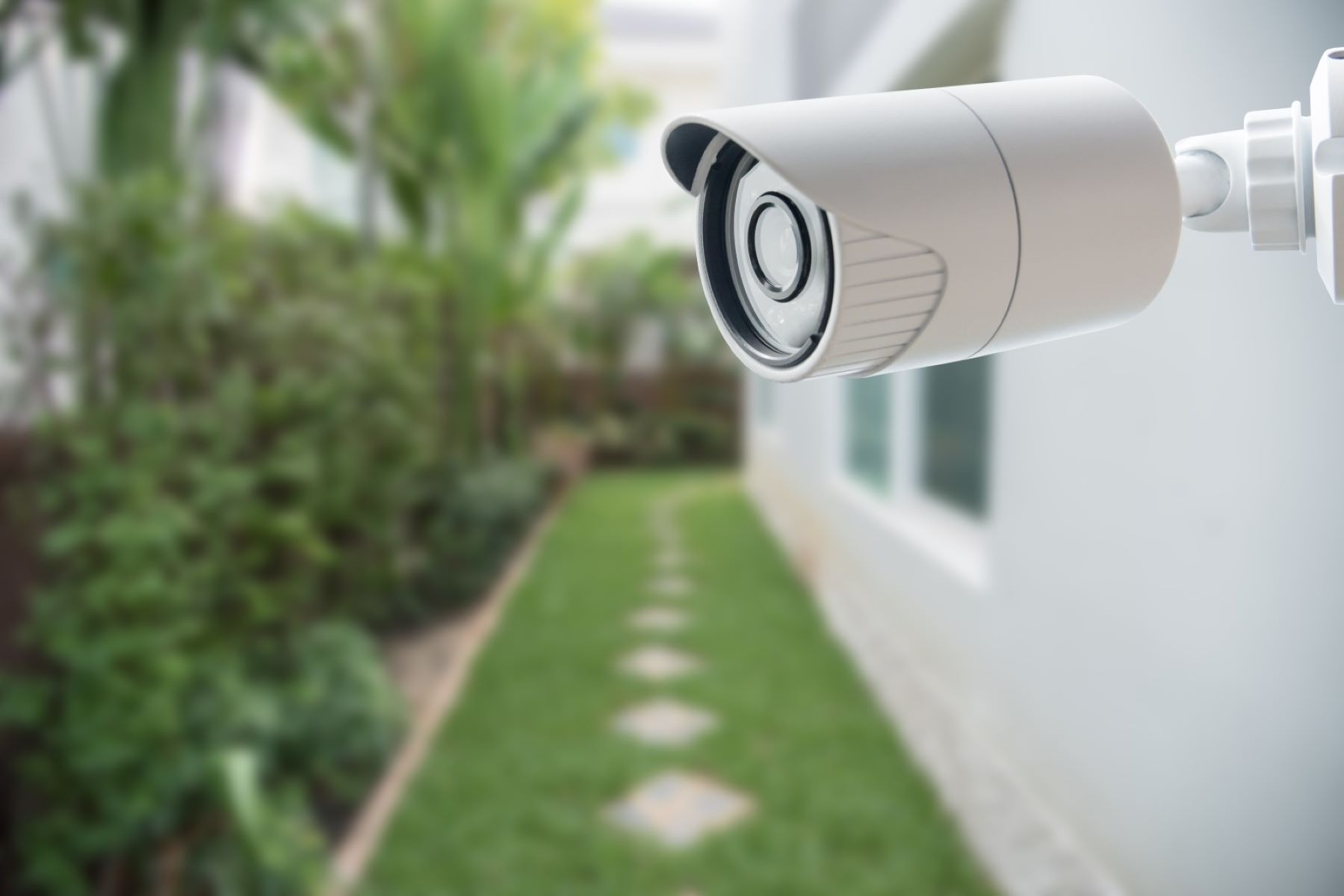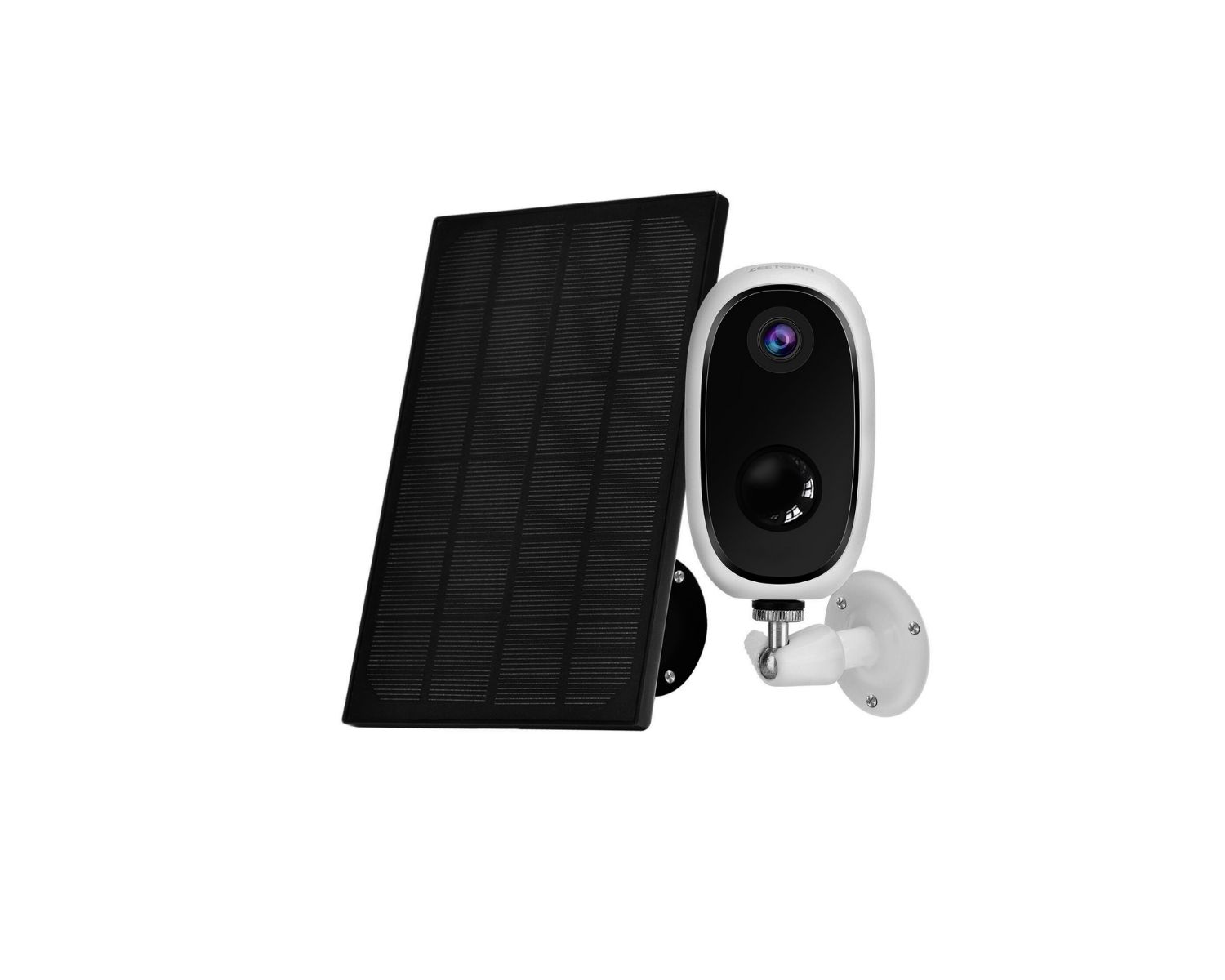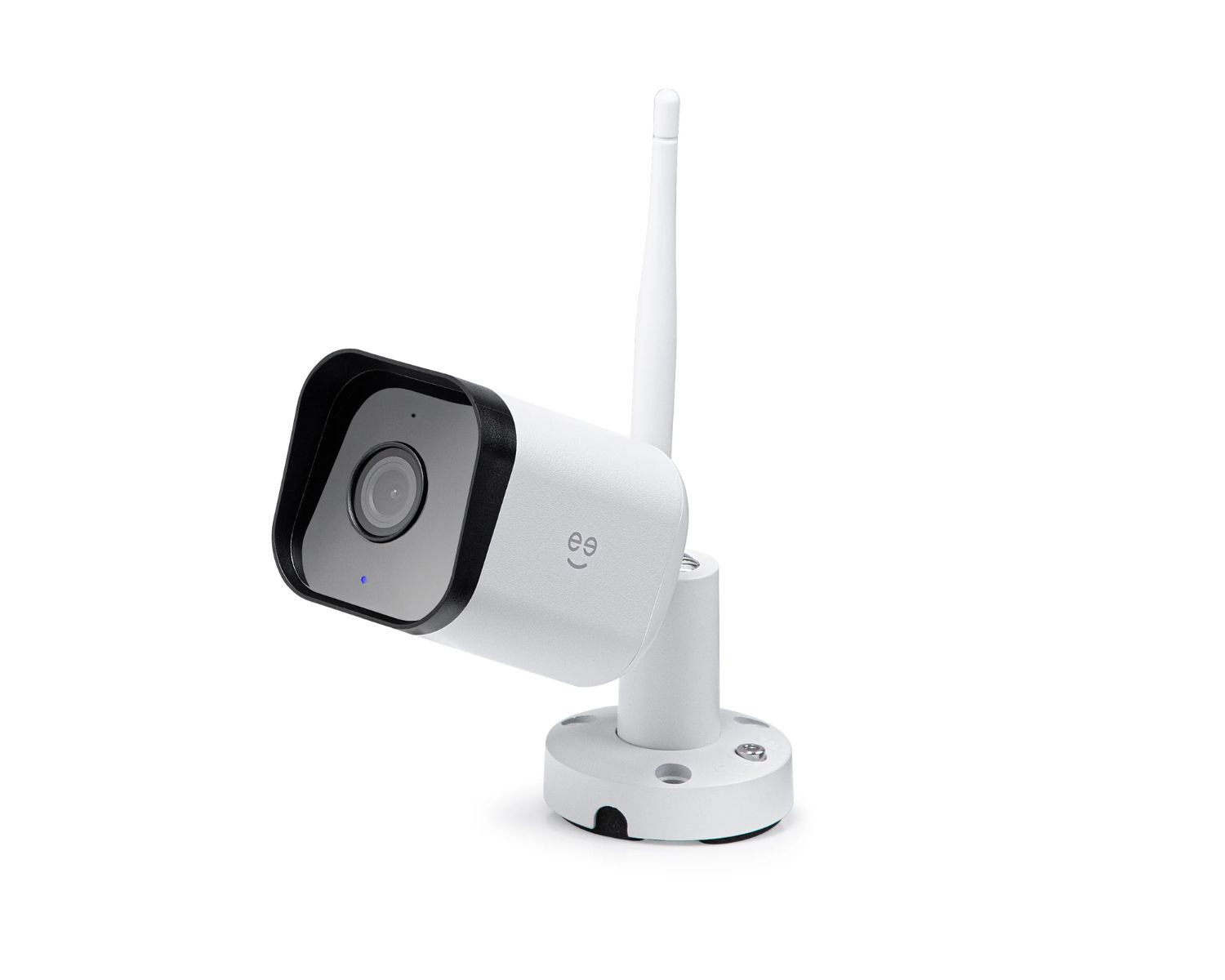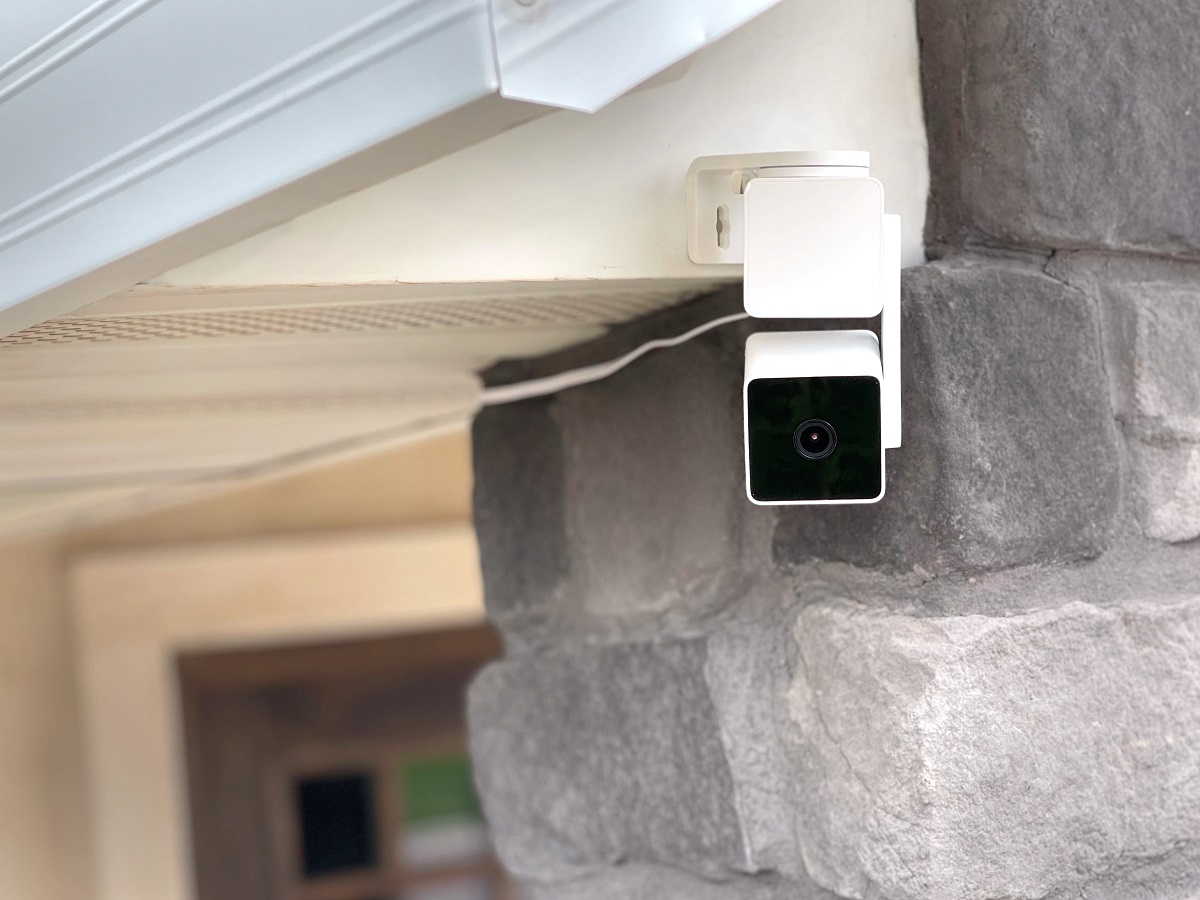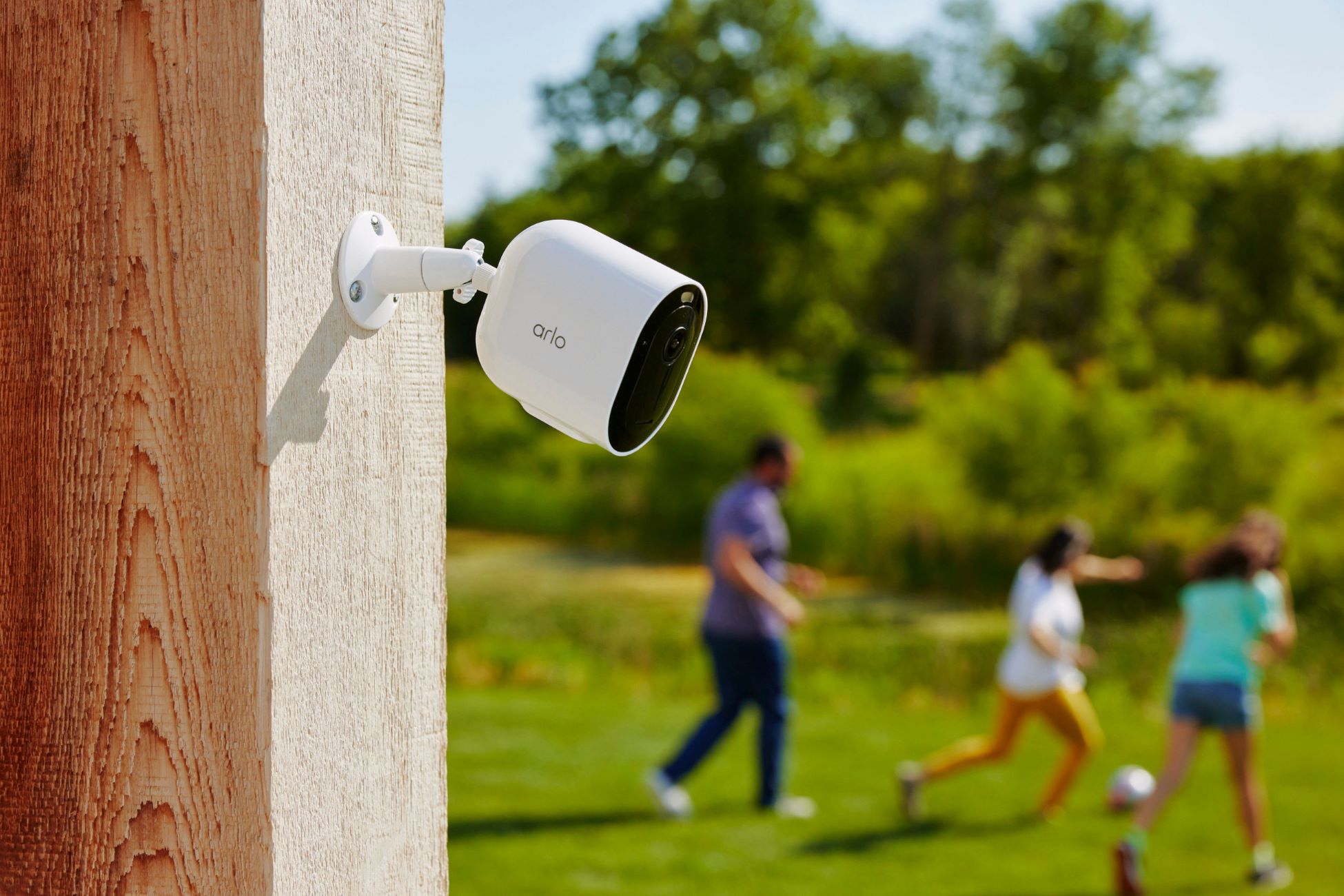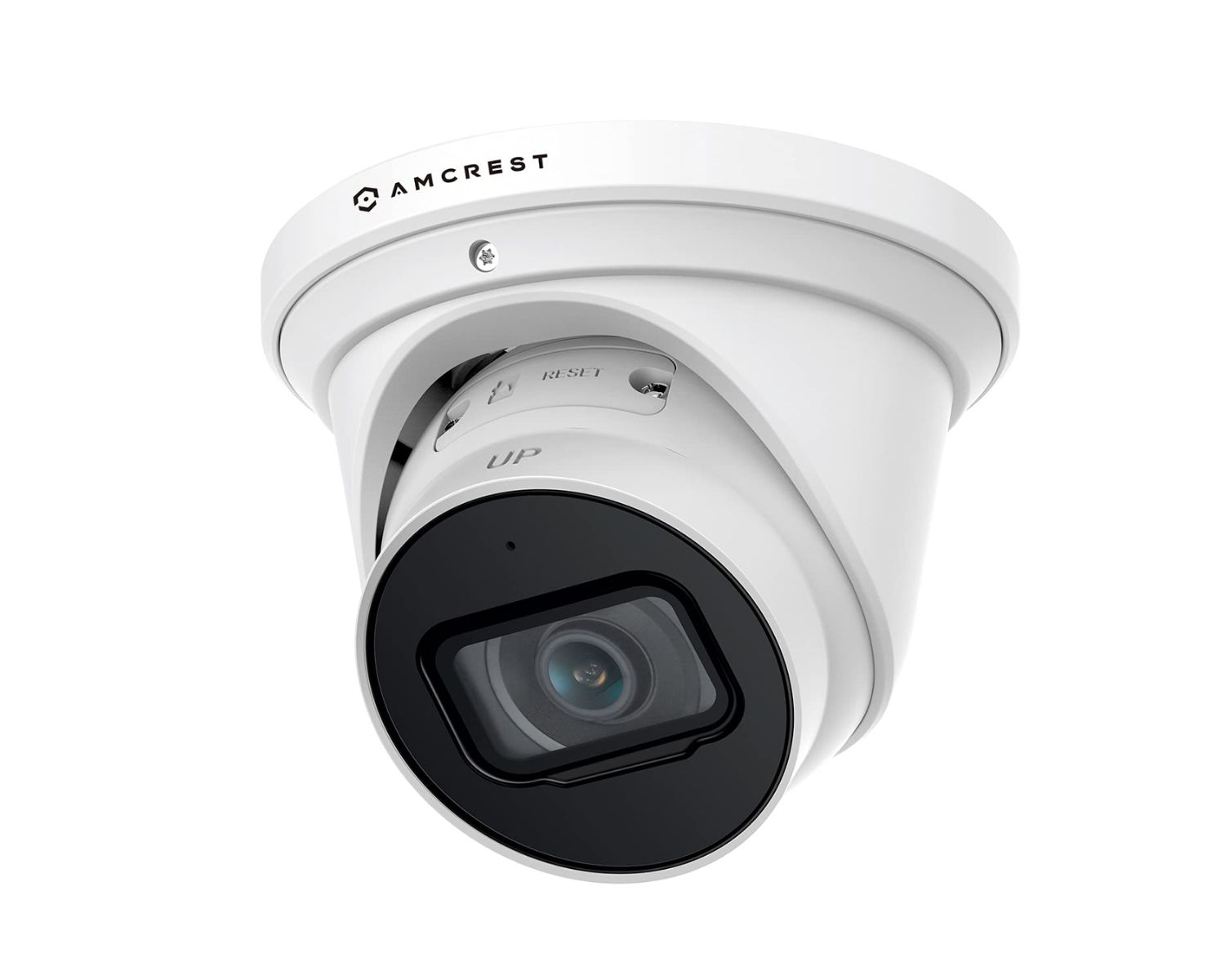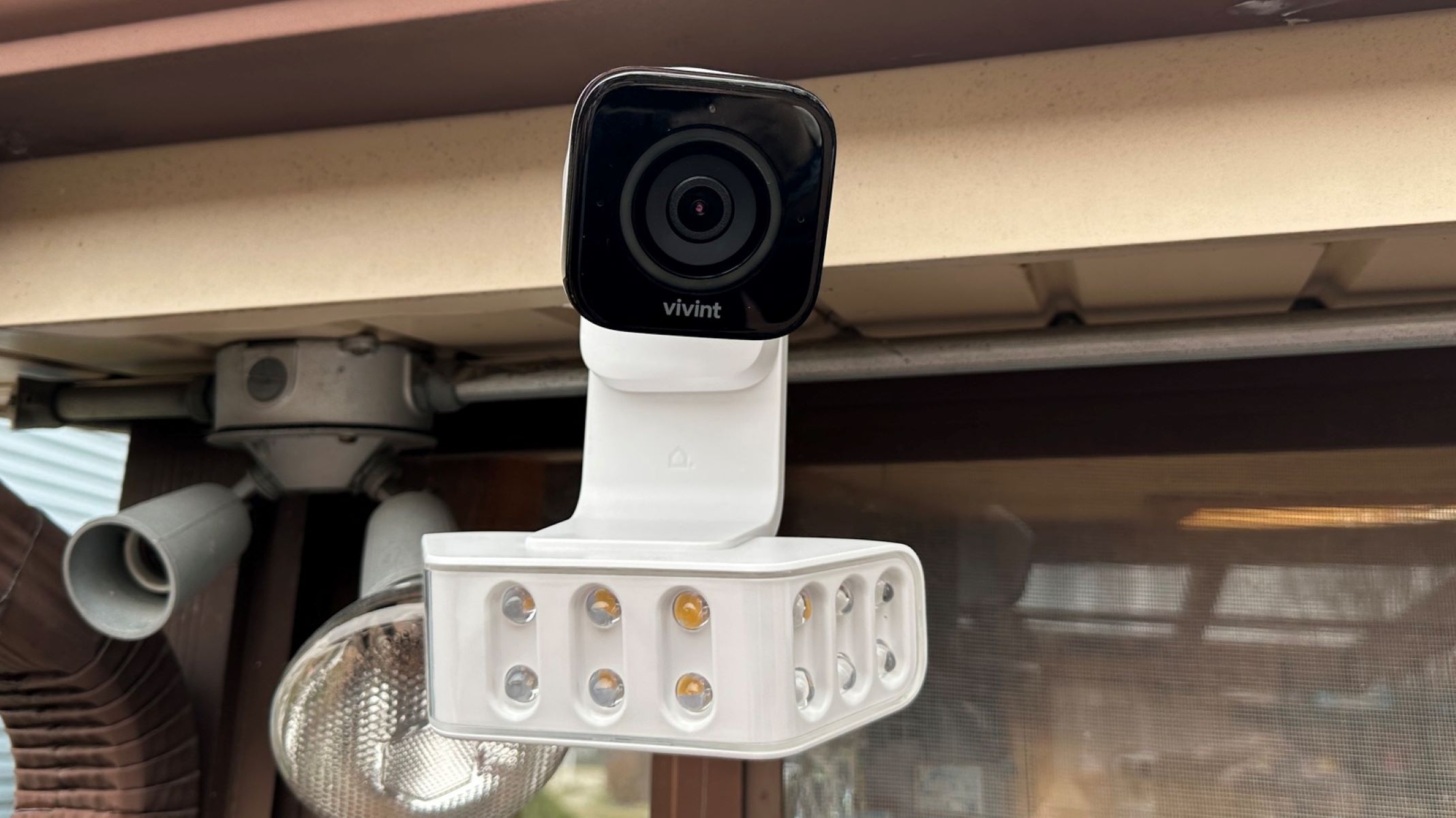Home>Home Security and Surveillance>How To Disturb Outdoor Camera System
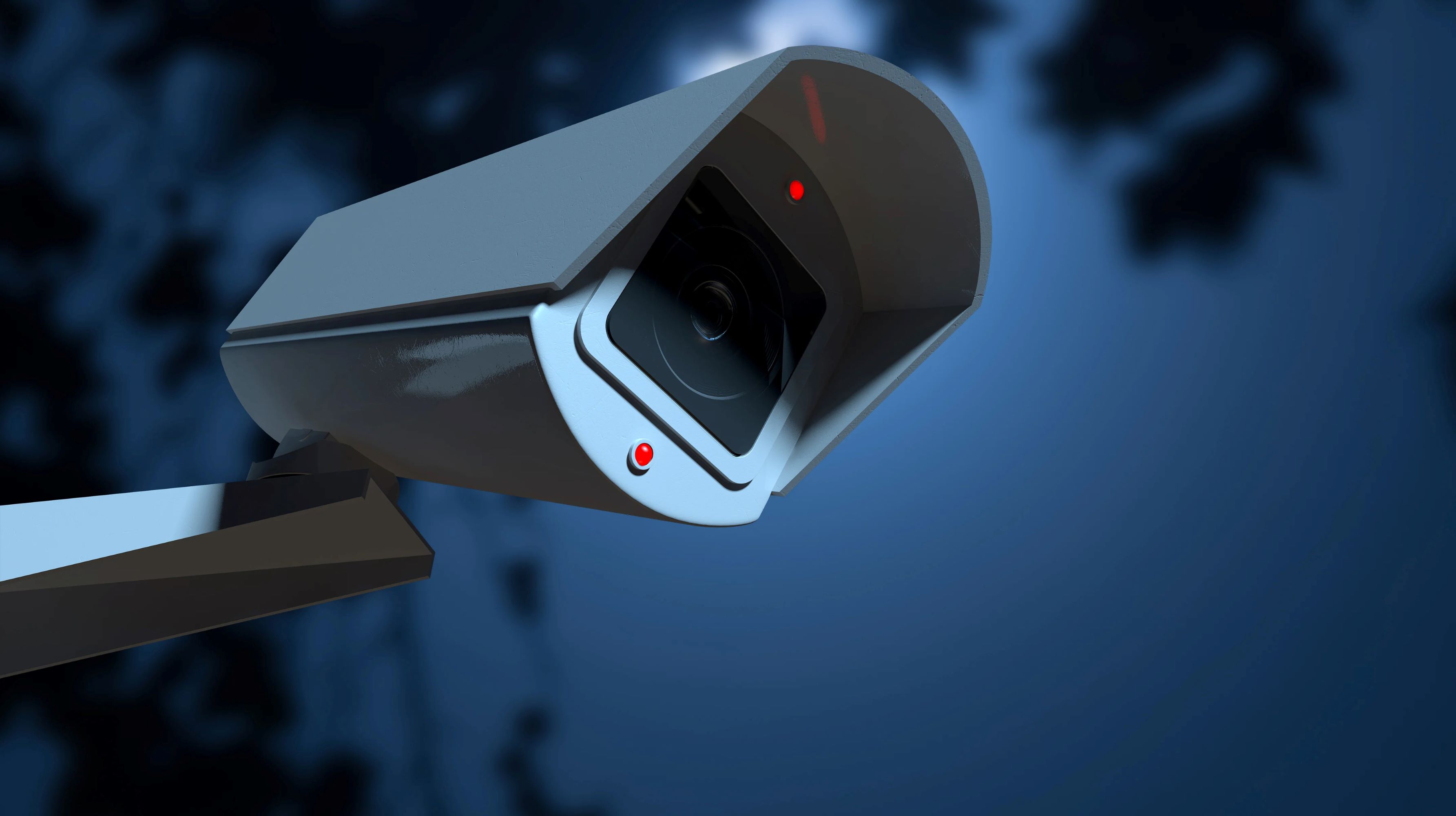

Home Security and Surveillance
How To Disturb Outdoor Camera System
Modified: March 6, 2024
Upgrade your home security and surveillance with these expert tips on how to strategically disturb outdoor camera systems for enhanced protection. Safeguard your property today!
(Many of the links in this article redirect to a specific reviewed product. Your purchase of these products through affiliate links helps to generate commission for Storables.com, at no extra cost. Learn more)
Introduction
Welcome to the world of home security and surveillance! In today’s fast-paced and interconnected society, having a reliable outdoor camera system is essential to protect your property and loved ones. These systems offer peace of mind by providing round-the-clock monitoring and deterrence against potential threats.
However, there may be instances when you find yourself wanting to disturb or interfere with an outdoor camera system. It could be for various reasons — perhaps you want to maintain your privacy, test the system’s vulnerabilities, or you are simply curious about its capabilities. Regardless of your motivation, it’s important to approach this topic with caution and responsibility.
In this comprehensive guide, we will explore the different types of outdoor camera systems, discuss the factors you should consider before disturbing them, and delve into the various physical and technological methods of interference. We will also touch upon the legal considerations surrounding the disturbance of outdoor camera systems and offer tips on detecting and preventing unwanted interference.
Before we proceed further, it is crucial to note that this article is intended for educational purposes only. It is not meant to encourage or endorse any illegal activities or actions that infringe upon others’ privacy or property. Always ensure that you comply with local regulations and laws when dealing with outdoor camera systems.
Now, let’s dive into the world of outdoor camera systems and explore the different aspects of disturbing them!
Key Takeaways:
- Respect privacy and laws when dealing with outdoor camera systems. Understand the system’s capabilities and consider alternatives before disturbing it. Always act responsibly and within legal boundaries.
- Prioritize safety and ethical considerations when disturbing outdoor camera systems. Be aware of the potential legal implications and seek professional guidance if uncertain.
Read more: How To Add Outdoor Camera To Vivint System
Understanding Outdoor Camera Systems
Before discussing the various ways to disturb outdoor camera systems, it’s important to have a basic understanding of how they work. Outdoor camera systems are designed to monitor and record activities in the exterior areas of your property. These systems typically consist of one or more cameras, a control unit, and the necessary cabling or wireless connectivity.
The main purpose of an outdoor camera system is to provide surveillance and security. They act as a deterrent to potential intruders or criminals by capturing clear video footage of any suspicious activities. This footage can be used for evidence, investigation, or as a deterrent to prevent future incidents.
Modern outdoor camera systems often come equipped with advanced features such as motion detection, night vision, facial recognition, and remote access. Motion detection allows the camera to start recording when it detects any movement within its field of view. Night vision ensures that the camera can capture clear footage even in low-light or no-light conditions. Facial recognition technology enables the system to identify familiar faces or alert you to the presence of unknown individuals.
Wireless outdoor camera systems have gained popularity due to their ease of installation and flexibility. These systems transmit video footage to a central control unit or directly to your smartphone or computer via Wi-Fi or cellular networks. This allows you to monitor your property remotely and receive real-time notifications in case of any detected activity.
Outdoor camera systems can be further categorized based on their power source and connectivity. Some cameras are powered by batteries, while others are wired to a power source. Some systems use Ethernet cables for connectivity, while others rely on Wi-Fi or cellular networks.
Understanding the basics of outdoor camera systems is essential when it comes to disturbing or interfering with their operation. By knowing their capabilities and limitations, you can better understand the potential impact of any disturbances you may introduce.
Now that we have a good grasp of outdoor camera systems, let’s explore the different types of systems commonly installed in residential and commercial settings.
Common Types of Outdoor Camera Systems
Outdoor camera systems come in a variety of types and configurations, each designed to suit different preferences and requirements. Understanding these types can help you make informed decisions when selecting or dealing with outdoor camera systems.
1. Bullet Cameras: These are the most common type of outdoor cameras and are known for their sleek, cylindrical shape. Bullet cameras are easy to install and can be mounted on walls or ceilings. They provide a fixed view and are ideal for monitoring specific areas such as entrances, driveways, or outdoor pathways.
2. Dome Cameras: Dome cameras are characterized by their dome-shaped housing, which makes them less obtrusive and more aesthetically pleasing. They offer a 360-degree view and can be used for wide area coverage. Dome cameras are often used in commercial settings like parking lots or large outdoor areas where a broad surveillance range is required.
3. PTZ Cameras: PTZ (Pan-Tilt-Zoom) cameras are versatile and provide remote control over the camera’s movement. They can pan from side to side, tilt up and down, and zoom in and out to capture details. PTZ cameras are commonly used in outdoor surveillance applications where the camera needs to cover a large area and requires flexibility in its field of view.
4. Wireless Cameras: Wireless outdoor camera systems have gained popularity due to their convenience and flexibility. These cameras communicate with a central control unit or directly with your smartphone or computer using Wi-Fi or cellular networks. Since there are no wires to deal with, wireless cameras can be easily mounted in various locations and provide excellent mobility.
5. Solar-Powered Cameras: Solar-powered outdoor cameras utilize solar panels to charge their batteries, making them eco-friendly and eliminating the need for regular battery replacement or wiring. These cameras are ideal for locations where access to a power source is limited or unavailable.
6. Hidden Cameras: Also known as covert cameras, hidden cameras are designed to be discreet and blend seamlessly into the environment. They can be disguised as everyday objects such as smoke detectors, outdoor lights, or even rocks. Hidden cameras are often used for undercover surveillance or when you want to monitor an area without drawing attention.
7. Smart Cameras: Smart outdoor cameras are equipped with advanced features like motion detection, facial recognition, and remote access. These cameras can send alerts to your smartphone when they detect any activity, allowing you to monitor your property in real-time from anywhere. They may also integrate with other smart home devices, providing a comprehensive home security system.
Now that we know the common types of outdoor camera systems, we can move on to the factors you should consider before disturbing an outdoor camera system, making sure that any interference is done responsibly and within legal boundaries.
Factors to Consider Before Disturbing an Outdoor Camera System
Disturbing an outdoor camera system is not a decision to be taken lightly. It’s essential to consider several factors before proceeding with any actions that may interfere with the system’s operation. By doing so, you can ensure that you are acting responsibly and within legal boundaries. Here are some crucial factors to consider:
1. Privacy: Assess your privacy concerns before disturbing an outdoor camera system. Determine if the camera’s field of view extends beyond your property boundaries or intrudes on private areas such as bedrooms or bathrooms. It’s important to respect the privacy of others and avoid interfering with their reasonable expectations of privacy.
2. Legality: Familiarize yourself with the relevant laws and regulations regarding outdoor camera systems in your jurisdiction. Understand the restrictions and guidelines, such as where cameras can be placed and the recording of audio or video in certain areas. Ensure that any disturbance you introduce is within the boundaries set by the law.
3. Intended Purpose: Consider the reason behind your desire to disturb the outdoor camera system. Are you doing it out of curiosity, or do you have legitimate concerns? Understanding your motivations can help you approach the situation with clarity and determine the best course of action.
4. Consent: If the outdoor camera system belongs to someone else, such as a neighbor or business, it is important to obtain their consent before attempting any interference. Respecting the rights of others and maintaining open communication can help prevent conflicts and legal issues.
5. Risks and Consequences: Evaluate the potential risks and consequences associated with disturbing an outdoor camera system. Consider the possibility of damaging the equipment, triggering false alarms, or facing legal repercussions. It’s crucial to weigh these risks and consequences before taking any actions.
6. Alternatives: Explore alternative solutions to address your concerns without directly disturbing the outdoor camera system. For example, if you have privacy concerns, consider erecting barriers or curtains to block the camera’s view or consult with the camera owner to adjust its angle away from private areas.
7. Consulting Professionals: If you have significant concerns or complex situations, consider seeking advice from legal professionals or home security experts. They can provide guidance and help you navigate the legal and ethical aspects of disturbing an outdoor camera system.
By carefully considering these factors, you can make an informed decision about whether or not to disturb an outdoor camera system. Remember, it is essential to act responsibly, respect the rights of others, and comply with the law at all times.
Next, let’s dive into the legal considerations surrounding the disturbance of outdoor camera systems to further understand the boundaries and responsibilities involved.
Legal Considerations
Disturbing an outdoor camera system comes with legal implications that must be carefully considered. It’s crucial to understand the laws and regulations governing the installation, operation, and interference of outdoor camera systems in your jurisdiction. Here are some common legal considerations to keep in mind:
1. Surveillance Laws: Familiarize yourself with the surveillance laws in your area. These laws dictate the permissible use of surveillance cameras, including where they can be placed, the recording of audio or video, and the scope of the captured footage. Violating these laws can result in legal consequences, including fines and even criminal charges.
2. Trespassing: When interfering with an outdoor camera system, ensure that you are not trespassing on private property. Your actions should be confined to your own property or areas where you have explicit permission to access. Unauthorized access to someone else’s property can lead to legal issues and potential civil liabilities.
3. Invasion of Privacy: Respect the privacy of others when dealing with outdoor camera systems. Intruding on private spaces, such as bedrooms, bathrooms, or secluded areas, can infringe upon individuals’ reasonable expectations of privacy and may lead to legal consequences. Make sure your actions do not violate the privacy rights of others.
4. Property Ownership: Understand the ownership of the outdoor camera system you intend to disturb. If the camera system belongs to someone else, interfering with it without their consent can be considered vandalism or property damage, leading to legal consequences. Seek permission from the owner or consult with legal professionals to ensure you are acting within your rights.
5. Intellectual Property: Some outdoor camera systems may be protected by intellectual property rights, such as patents or trademarks. Engaging in activities that infringe upon these rights can result in legal action and financial liabilities. Research and ensure that your actions do not violate any intellectual property rights associated with the camera system.
6. Unauthorized Access: Accessing or tampering with the control unit or the camera’s software without authorization may violate laws related to computer crimes. Keep in mind that unauthorized access to computer systems or networks can result in legal consequences, including fines and imprisonment.
7. Consult Legal Professionals: If you are uncertain about the legal implications of interfering with an outdoor camera system, it is advisable to seek advice from legal professionals who specialize in privacy and surveillance laws. They can provide tailored guidance based on your specific circumstances.
Remember, this article is intended for educational purposes only and should not serve as legal advice. The laws and regulations surrounding outdoor camera systems vary depending on your jurisdiction, so it’s essential to consult local authorities or legal professionals for accurate and up-to-date information.
Now that we’ve explored the legal considerations, let’s move on to discuss the various methods to disturb outdoor camera systems responsibly.
Cover the camera with a dark cloth or spray it with a substance like shaving cream to block the lens and disrupt the outdoor camera system.
Ways to Disturb Outdoor Camera Systems
If you have valid reasons or concerns for disturbing an outdoor camera system, there are several methods you can consider. It’s important to approach any interference responsibly and within legal boundaries. Here are some ways to disturb outdoor camera systems:
1. Physical Methods:
- Covering the Camera: One of the simplest physical methods is to cover the camera lens temporarily. This can be done using materials such as tape, stickers, or even specialized camera lens covers. However, keep in mind that covering the camera may raise suspicion if the camera owner regularly monitors their system.
- Adjusting the Camera Angle: If the camera is within your reach, you can try adjusting its angle to face away from areas of concern. This can be done by gently repositioning the camera or using tools like extension poles or ladder if needed. Ensure that you don’t cause any damage to the camera or its mounting.
- Blocking the Camera’s View: If you want to block the camera’s view permanently or for an extended period, you can use physical barriers such as fences, walls, or landscaping elements that obstruct the camera’s line of sight. However, make sure that you are not intruding on someone else’s property or violating any local regulations.
2. Technological Methods:
- Use Infrared Light: Infrared light can interfere with certain cameras that rely on visible light. Using infrared light sources, such as infrared LED lights or lasers, may create a glare or overexposure effect that affects the camera’s ability to capture clear footage. However, it’s important to note that this method may not work on all cameras, particularly those equipped with advanced night vision technology.
- Signal Jamming: Signal jammers can disrupt the wireless communication between the camera and its control unit. These devices emit radio frequency signals that interfere with the camera’s transmission, causing disruption in the video feed. However, it’s important to be aware that using signal jammers is illegal in many countries, as they can interfere with important communication systems like emergency services.
- Disabling Power Source: If you have access to the power source of the camera, such as an outdoor power outlet or wiring, you may choose to temporarily disable the camera by disconnecting or tampering with the power supply. Nevertheless, you should proceed with caution and avoid damaging any electrical components or wiring.
It is crucial to emphasize that interfering with outdoor camera systems should only be done in appropriate and legal situations. Always consider the potential consequences and ensure that your actions do not violate any laws or infringe upon the rights of others.
Next, let’s explore the methods to detect and prevent disturbances to outdoor camera systems, ensuring the system’s integrity and functionality.
Physical Methods of Disturbance
When it comes to disturbing an outdoor camera system, there are physical methods that can be employed to interfere with its operation. It’s important to note that these methods should only be used responsibly and within legal boundaries. Here are some physical methods of disturbance:
1. Covering the Camera Lens: One straightforward and temporary method is to cover the camera lens. By using objects like tape, stickers, or specialized camera lens covers, you can obstruct the camera’s view and prevent it from capturing clear footage. However, keep in mind that covering the camera may raise suspicion if the camera owner regularly monitors their system.
2. Adjusting the Camera Angle: If the camera is within reach, you can try adjusting its angle to face away from areas of concern. By gently repositioning the camera or using tools like extension poles or ladders, you can change its field of view and potentially limit the surveillance range. It’s important to note that you should avoid causing any damage to the camera or its mounting during this process.
3. Blocking the Camera’s View: Another physical method is to obstruct the camera’s view using physical barriers. This can involve placing objects like fences, walls, or landscaping elements strategically to block the camera’s line of sight. However, it’s crucial to ensure that you are not trespassing on someone else’s property or violating any local regulations when implementing this method.
4. Disabling the Power Source: If you have access to the power source of the camera, such as an outdoor power outlet or wiring, you may choose to temporarily disable the camera by disconnecting or tampering with the power supply. However, it’s important to proceed with caution and avoid damaging any electrical components or wiring in the process.
5. Using Glare or Reflection: One creative and non-destructive method is to use glare or reflection to distort the camera’s view. By strategically placing reflective surfaces or reflective objects in the camera’s line of sight, you can create a glare or reflect bright sunlight that obscures its field of view. This method can be effective during certain times of the day and is less likely to raise suspicion.
It’s important to remember that interfering with an outdoor camera system should be done responsibly and within legal boundaries. Always consider the potential consequences and ensure that your actions do not violate any laws or infringe upon the rights of others.
Next, let’s explore the technological methods of disturbing outdoor camera systems, providing alternative approaches to interference.
Technological Methods of Disturbance
When it comes to disturbing outdoor camera systems, there are technological methods that can be utilized to interfere with their proper functioning. However, it is crucial to approach such methods responsibly and within the bounds of the law. Here are some technological methods of disturbance:
1. Signal Jamming: Signal jammers are devices that emit radio frequency signals to interfere with the wireless communication between the camera and its control unit. These devices disrupt the camera’s ability to transmit video footage, causing disruption or interruption in the feed. However, it’s important to note that using signal jammers is illegal in many countries, as they can interfere with important communication systems like emergency services.
2. Light Manipulation: Cameras rely on light to capture clear footage. By manipulating the light source in the camera’s field of view, you can potentially disturb the resulting image or video quality. This can be done using bright lights, flashlights, or laser pointers to create glare, lens flares, or overexposure, rendering the captured footage less useful. However, it’s crucial to use these methods responsibly and avoid causing harm or damage to the camera or its components.
3. Infrared Light: Some cameras rely on visible light to capture footage, while others utilize infrared (IR) light for night vision. If the camera uses visible light, interfering with its operation can be achieved by emitting strong IR light sources, such as infrared LED lights or lasers, which can affect the camera’s ability to capture clear footage. However, it’s important to note that this method may not be effective on cameras equipped with advanced night vision technology that can differentiate between visible light and IR light sources.
4. Tampering with Video Feed: If you have access to the camera’s control unit or network, you may attempt to tamper with the video feed. This can involve manipulating the camera settings, disrupting the transmission, or even injecting false video data, resulting in distorted or unusable footage. However, it’s important to note that unauthorized access to computer systems or networks is illegal in many jurisdictions and can lead to severe legal consequences.
It is essential to emphasize that these technological methods of disturbance should only be used in appropriate and lawful situations. Always consider the potential consequences and ensure that your actions do not violate any laws or infringe upon the rights of others.
Next, let’s move on to discussing the importance of detecting and preventing disturbances to outdoor camera systems, ensuring their integrity and functionality.
Detecting and Preventing Disturbances to Outdoor Camera Systems
When it comes to outdoor camera systems, detecting and preventing disturbances is crucial to maintain their integrity and functionality. By being proactive and implementing preventive measures, you can ensure the system remains operational and effective. Here are some tips for detecting and preventing disturbances to outdoor camera systems:
1. Regular System Checks: Conduct regular inspections and checks of your outdoor camera system to identify any signs of disturbance or tampering. Look for physical damage, changes in camera angle or positioning, or any unusual behavior in the captured footage. By promptly detecting potential disturbances, you can take appropriate action to address them.
2. Install Security Measures: Enhance the security of your outdoor camera system by implementing measures such as robust passwords, encryption, and user authentication for accessing the camera’s control unit or network. This helps prevent unauthorized access and reduces the risk of tampering or interference with the system.
3. Camera Tampering Alerts: Some advanced outdoor camera systems come equipped with tampering detection features. These features can notify you when the camera lens is covered, moved, or tampered with in any way. Enabling these alerts can help you promptly respond to disturbances and take appropriate actions to mitigate the issue.
4. Motion Detection Alerts: Activate motion detection features on your outdoor camera system to receive instantaneous alerts whenever there is movement detected in the camera’s field of view. This allows you to monitor your property in real-time and be alerted of any potential disturbances or unauthorized activities.
5. Secure Mounting and Enclosures: Ensure that your outdoor cameras are securely mounted and properly enclosed to prevent physical tampering or damage. Consider using tamper-resistant screws or enclosures that provide additional protection against unauthorized access or interference.
6. Enhanced Lighting: Adequate lighting in and around the areas covered by your outdoor camera system can act as a deterrent and improve the visibility of potential intruders. Well-lit areas ensure that clear footage is captured, making it easier to identify any disturbances or suspicious activities.
7. Regular Maintenance and Updates: Maintain your outdoor camera system by keeping the firmware and software up to date. Regularly check for updates or patches provided by the manufacturer to ensure that your system is equipped with the latest security enhancements. This helps in preventing vulnerabilities that can be exploited by potential intruders or those seeking to disturb the system.
By implementing these preventive measures and actively monitoring your outdoor camera system, you can better protect it against potential disturbances. Additionally, it is important to maintain open communication with neighbors and discuss any concerns they might have with the placement or operation of your outdoor camera system.
Remember to always act within the boundaries of the law and respect the privacy rights of others when dealing with outdoor camera systems and potential disturbances.
Now that we have explored the importance of detecting and preventing disturbances, let’s conclude our comprehensive guide to disturbing outdoor camera systems.
Conclusion
Outdoor camera systems play a vital role in protecting our properties and ensuring our safety. While there may be instances when you want to disturb or interfere with an outdoor camera system, it is crucial to approach this topic responsibly and within legal boundaries. In this comprehensive guide, we have explored various aspects related to disturbing outdoor camera systems.
We began by understanding the fundamentals of outdoor camera systems, their types, and their capabilities. It is essential to have a good grasp of how these systems work before considering any disturbance.
Next, we discussed the factors that should be considered before disturbing an outdoor camera system. Privacy concerns, legal implications, and the intended purpose of disturbance are crucial aspects that should guide your decision-making process.
We also emphasized the legal considerations involved in disturbing outdoor camera systems. Familiarizing yourself with the pertinent privacy and surveillance laws in your jurisdiction is essential to ensure that you operate within the boundaries set by the law.
Furthermore, we explored various methods that can be employed to disturb outdoor camera systems. Physical methods, such as covering the camera lens or adjusting the camera angle, provide immediate but temporary disturbances. Technological methods, such as signal jamming or manipulating light sources, can have more nuanced effects but come with legal implications that must be carefully considered.
To maintain the integrity and functionality of outdoor camera systems, we provided tips on detecting and preventing disturbances. Regular system checks, installing security measures, and utilizing features such as motion detection alerts and camera tampering alerts can help you promptly identify and address any disturbances or unauthorized activities.
In conclusion, when it comes to disturbing outdoor camera systems, it is important to act responsibly, within legal boundaries, and with respect for the privacy rights of others. Understanding the impact of your actions and considering alternative solutions can help you navigate this topic ethically and responsibly.
Remember, this guide is intended for educational purposes only and should not be considered legal advice. Always consult local regulations and seek advice from legal professionals if you have any specific concerns or questions regarding outdoor camera systems and potential disturbances.
Now that you are equipped with the knowledge and considerations, use it responsibly as you engage with outdoor camera systems and make informed decisions about disturbing or interfering with them.
Frequently Asked Questions about How To Disturb Outdoor Camera System
Was this page helpful?
At Storables.com, we guarantee accurate and reliable information. Our content, validated by Expert Board Contributors, is crafted following stringent Editorial Policies. We're committed to providing you with well-researched, expert-backed insights for all your informational needs.


